Weaving Tales: Emerging Trends in Irish Fashion Inspired by Folklore
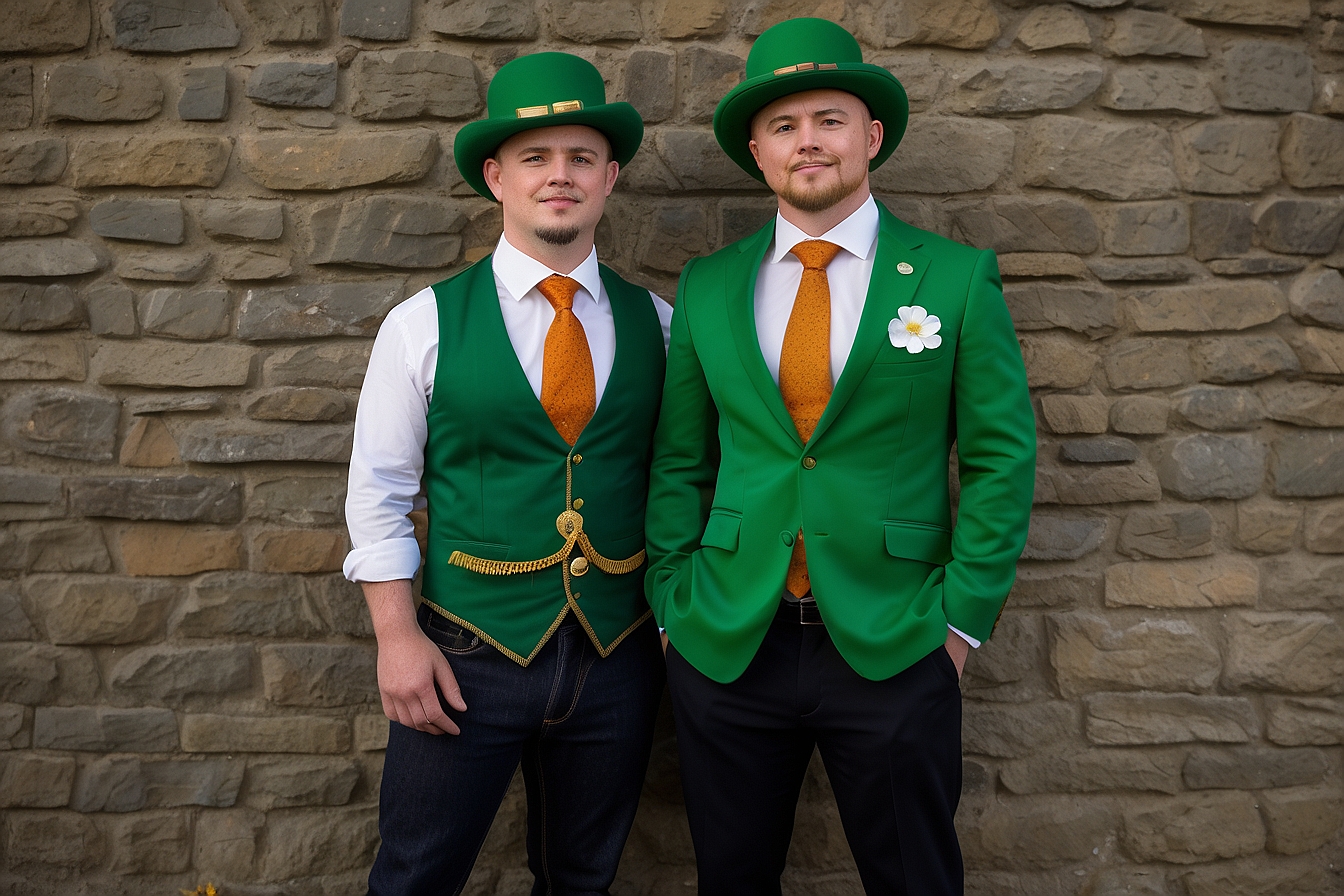
Updated On: April 22, 2024 by Eman Sameh
In Ireland, the intertwining threads of Irish Fashion and tailoring stitch together a unique tapestry of cultural identity that has influenced fashion designers for generations. The motifs and narratives drawn from the rich well of Irish folklore not only decorate but also deeply inform the fabric and design of Irish fashion. The leprechauns and faeries, myths and legends that emanate from the Emerald Isle’s past, are not merely tales of bygone days; they resonate in modern threads, shaping a distinct sartorial expression that blurs the line between storytelling and style.
Fashion, in this context, is a reflection of nature, the lush landscapes and wild coasts that have been home to the mesmerising sagas and traditions of Ireland. Designers draw inspiration from these elements, weaving them intricately into collections that speak not just of aesthetics but of a heritage that has transcended time. As each generation adapts and evolves the Irish style, they preserve a sense of identity, weaving the fabric of culture into contemporary fashion while ensuring that the essence of the folklore that shaped them is never lost. The dance, symbolism, and mythology are all reflected in their fashionable expressions, demonstrating a seamless blend of past and present in their creations.
Roots of Irish Folklore
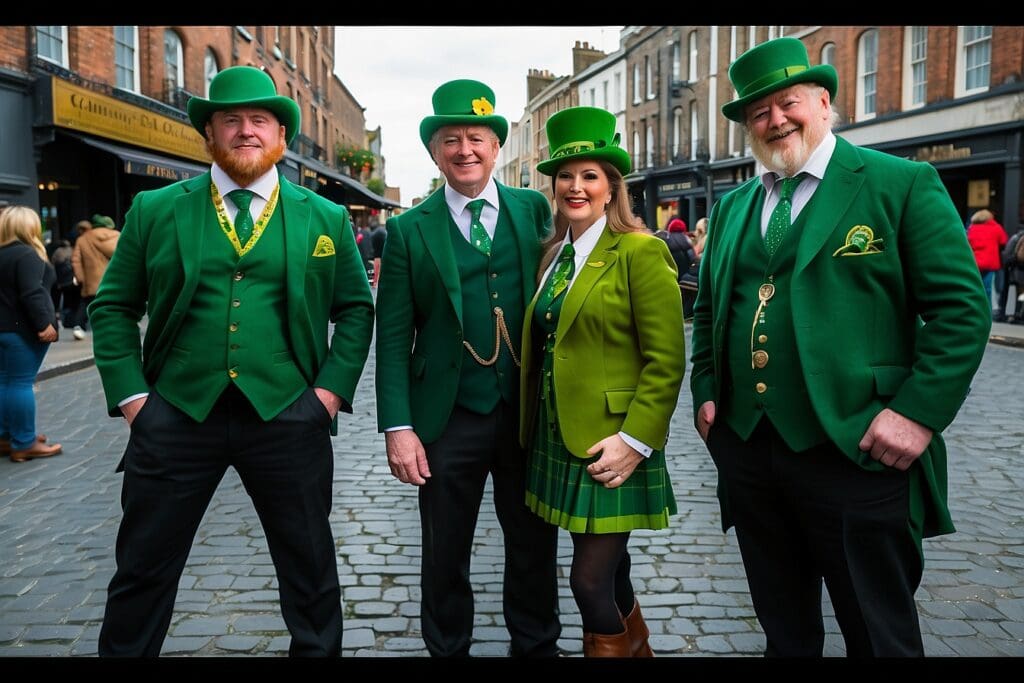
We can trace the beginnings of Irish folklore to the ancient practice of oral tradition, where seanchaí, or storytellers, played a pivotal role. These guardians of Gaelic traditions regaled communities with stories that encapsulated the essence of Irish culture. Their tales often revolved around enchanting beings such as leprechauns, fairies, and selkies, fostering a rich tapestry of myths that reflected the country’s spiritual and natural world.
Integral to these age-old narratives is Celtic mythology, a genre featuring the legendary Tuatha Dé Danann. This pantheon of god-like beings is credited with bestowing magical powers and wisdom, forming a cornerstone of Ireland’s mythological heritage. Much more than simple entertainment, these stories served as a means of passing down vital information and societal values from one generation to the next.
The Irish storytelling tradition is symbiotic with the nation’s identity, influencing various aspects of culture, including fashion design. Our attire sometimes subtly weaves symbols and motifs derived from such folklore, honouring the power and mystique of Ireland’s ancestral legacy. Elements of these stories can still be seen today, entwined in the fabric patterns and accessories that capture the nation’s spirit and historical journey.
Historical Influence on Irish Design
Ireland’s design landscape is a tapestry woven through time, coloured by historical events such as colonisation and the intertwining of Christianity with ancient Celtic traditions.
Colonisation and Its Impact
The period of colonisation left an indelible mark on Irish design. British influence seeped into the fabric of Irish society, leading to a cross-pollination of aesthetics. However, Irish designers have long drawn from their rich well of native traditions and iconography as acts of cultural retention and resistance. This juxtaposition of colonial influence with indigenous design is evident in the textures and patterns of Irish fashion throughout history.
Christianity and Celtic Synthesis
With the advent of Christianity, Irish design underwent a transformation. Early Christians assimilated Celtic symbols into their art, creating a unique Celtic Christian artistic tradition. This synthesis is immortalised in illuminated manuscripts, such as the Book of Kells, and intricate high crosses that feature both Christian iconography and Celtic motifs. These elements have inspired our high-craft textiles, where Celtic knots, crosses, and spiral patterns adorn everything from knitwear to linens, echoing tales from Irish Celtic myth.
Weaving the Fabric of Culture
In Irish fashion design, the threads of folklore are intricately woven into the very fabric of the culture. From the pastoral imagery evoked by wool and linen to the distinctive patterns found in handwoven tweed, these materials and techniques embody the storied past of the Emerald Isle.
Wool and Linen
Wool, a material as rugged and warm as the Irish landscape, is a staple in Ireland’s textile heritage. Predominantly sourced from local sheep, the wool is spun into various yarns, ready to be transformed through the weaving process. Linen, derived from the flax plant, has long been cherished for its lightness and breathability, making it a favoured choice during the Irish summer months. Both materials, steeped in utilitarian and ceremonial usage, are cornerstones of traditional Irish attire.
Handwoven Tweed Production
The iconic handwoven tweed, particularly the famed Donegal tweed, emerges from the looms of counties known for their weaving heritage. One cannot speak of this craft without mentioning Magees of Donegal, a name synonymous with quality tweed production for over 150 years. Donegal tweeds are renowned for their complex weaving patterns, such as the herringbone pattern, giving rise to fabrics that are as durable as they are beautiful.
Aran Sweaters: A Stitch in Time
Our Aran sweaters, each a complex tapestry of stitches, narrate tales of family and island life with every pattern. These sweaters, originally crafted to shield fishermen from the harsh Atlantic weather, have become a symbol of Irish identity recognised worldwide. With stitches reflecting various aspects of the islanders’ daily lives, the Aran sweater is not just a garment but a woven archive of folklore and tradition.
Fashion as a Reflection of Nature
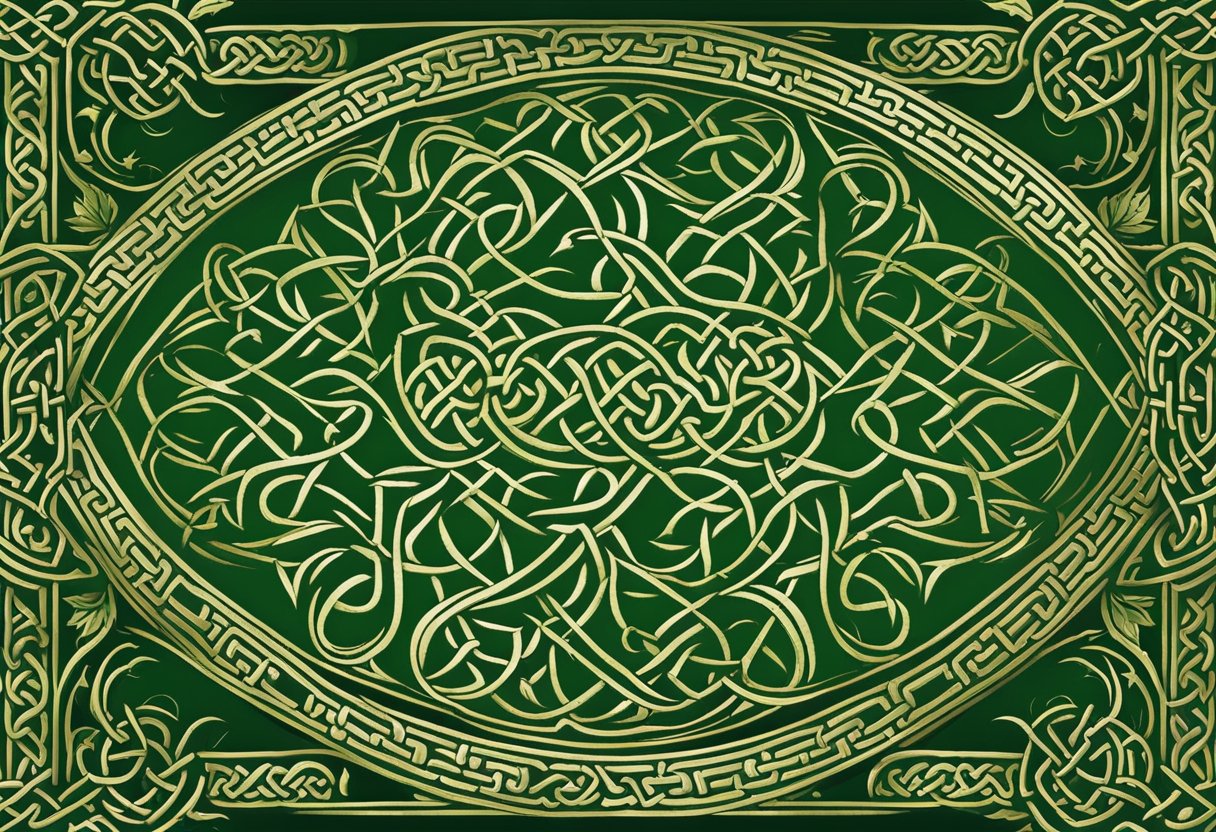
In Irish fashion design, using the country’s rich natural landscape is paramount. It informs the colour palette and textures prevalent in our creative work, reflecting the serene beauty of the Irish environment.
Landscape and Colour Palette
Ireland’s diverse scenery, from the rugged coastlines to the rolling green hills, is mirrored in the colour palettes of our fashion designs. We often harness the vivid greens of the Emerald Isle, incorporating them into our garments to evoke the sense of Ireland’s lush vegetation. Furthermore, the muted greys and blues reminiscent of the Irish Sea and stone inform the subtler hues in our collections. This attention to the landscape around us ensures that our clothing is a sartorial homage to the Irish environment.
Nature-Inspired Patterns and Textures
Our design ethos frequently involves integrating nature-inspired patterns such as herringbone, which echoes the woven quality of the natural world. Textures in our garments often have a tactile and organic feel reminiscent of the flora found across the Irish landscape. We also draw upon the intricate details found in nature, from the delicate structure of leaves to the complex patterns of ocean waves, crafting garments that embody these elements through intricate embroidery and weaving techniques. This allows us to celebrate nature not only in colour and silhouette but also in the very fabric of our fashion.
Mythology in Modern Threads
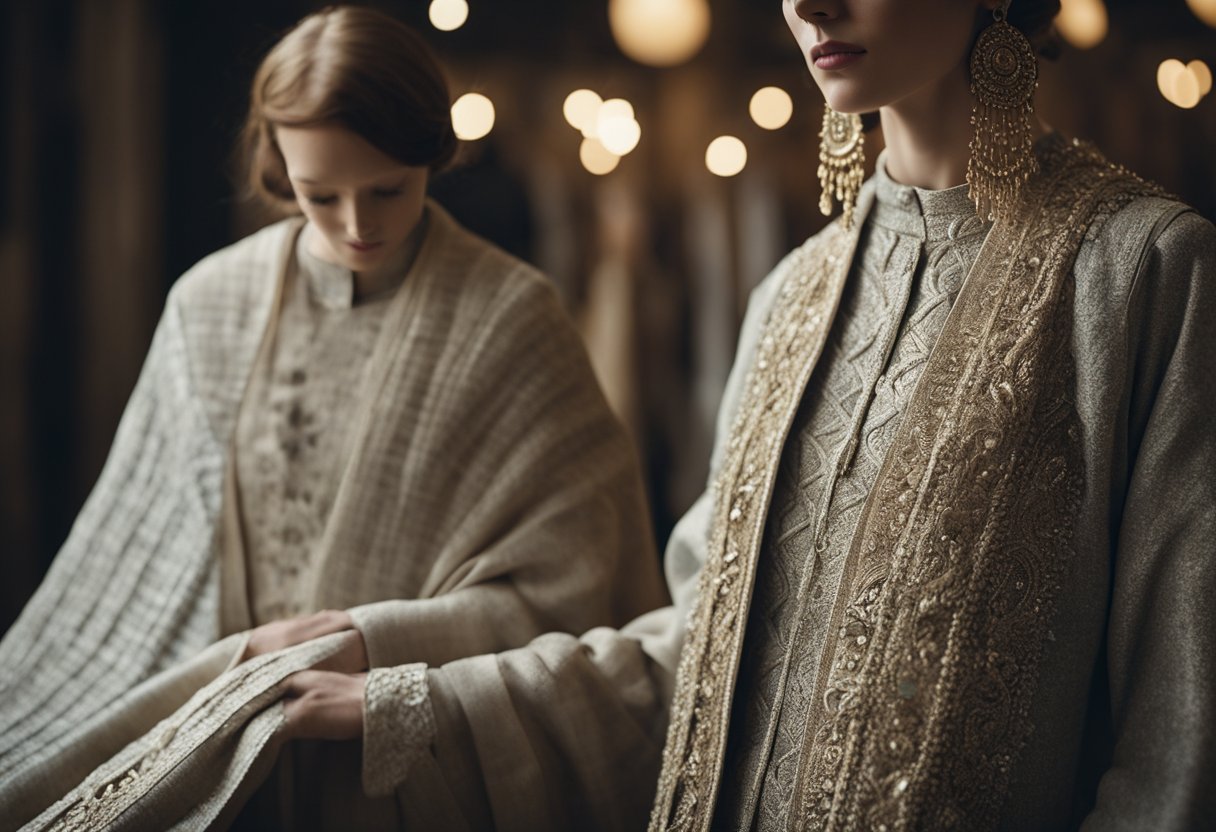
In the realm of Irish fashion design, the weaving together of ancient mythological elements with contemporary style speaks volumes about our cultural identity and heritage.
Incorporating Mythical Symbols
Our designers often draw from a rich palette of symbols derived from Celtic myth. Knots that have no starting point, known as the Celtic knot, are not only mesmerising to look at but also carry the weight of historical significance, representing the timeless nature of our spirit. Similarly, spirals that appear frequently in the Ulster Cycle can signify growth or expansion of consciousness. Emblems like these are deftly integrated into modern designs, transforming a simple garment into a piece teeming with stories and significance.
Reimagining Legends through Apparel
Reinterpreting the tales of heroism and adventure from legends such as Fionn mac Cumhaill and Cú Chulainn, the apparel becomes a canvas for narrating our distinct folklore. Designers might capture the essence of Fionn’s connection with nature through intricate earth-toned patterns or showcase the valour of Cú Chulainn with bold lines and warrior-like silhouettes. Our fashion serves as a vessel for these myths, allowing both wearer and observer to appreciate the boundless creativity spurred by our nation’s legendary figures.
Folklore and Cultural Identity
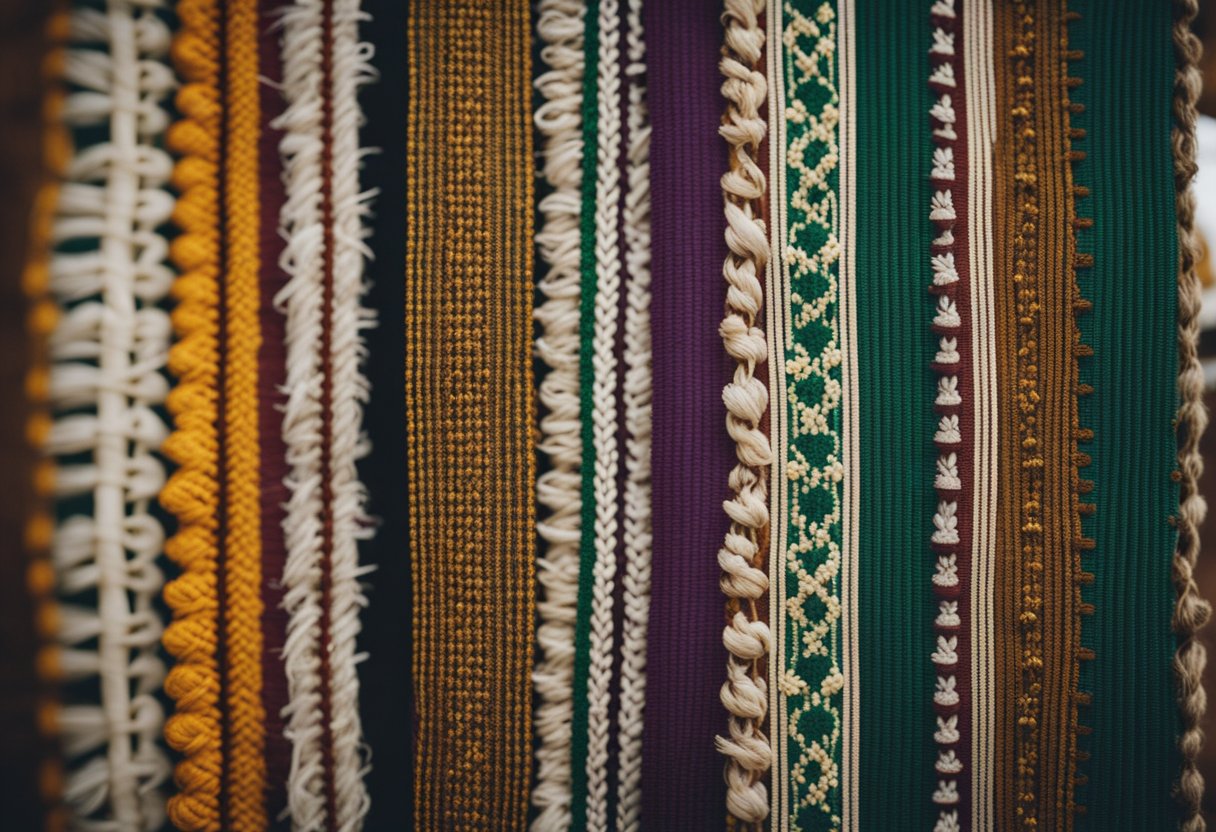
Folklore acts as a tapestry, weaving together a nation’s cultural identity through its tales and traditions. In Ireland, these stories are not just works of fiction; they serve as threads connecting the past with the present, influencing everything from social values to artistic expression, including fashion design.
Tales of the Otherworld
In the realm of Irish folklore, the Otherworld is teeming with enchanting narratives of deities and fae folk like the Sidhe. These tales passed down through oral traditions, carry more than just entertainment value—they are a cornerstone of our national identity. Designers often draw on this ethereal imagery, infusing their creations with elements that reflect our cultural values. Clothing patterns echoing the ethereal silhouettes of the banshee or the majestic poise of our ancient gods become wearable stories that embody our heritage.
Embracing Collective Memory
Collective memory and collective identity are interwoven through the stories narrated from one generation to the next. These stories hold the essence of our cultural values and are reflected in our communal ethos. Irish designers embrace this shared heritage, often incorporating motifs and symbols that resonate with the sense of belonging to a culture steeped in rich folklore. Our fashion becomes an extension of our cultural identity, with each stitch honouring the legacy of the Sidhe, the banshee, and the pantheon of deities that dwell in the heart of our homeland.
Adaptation and Evolution of Irish Style
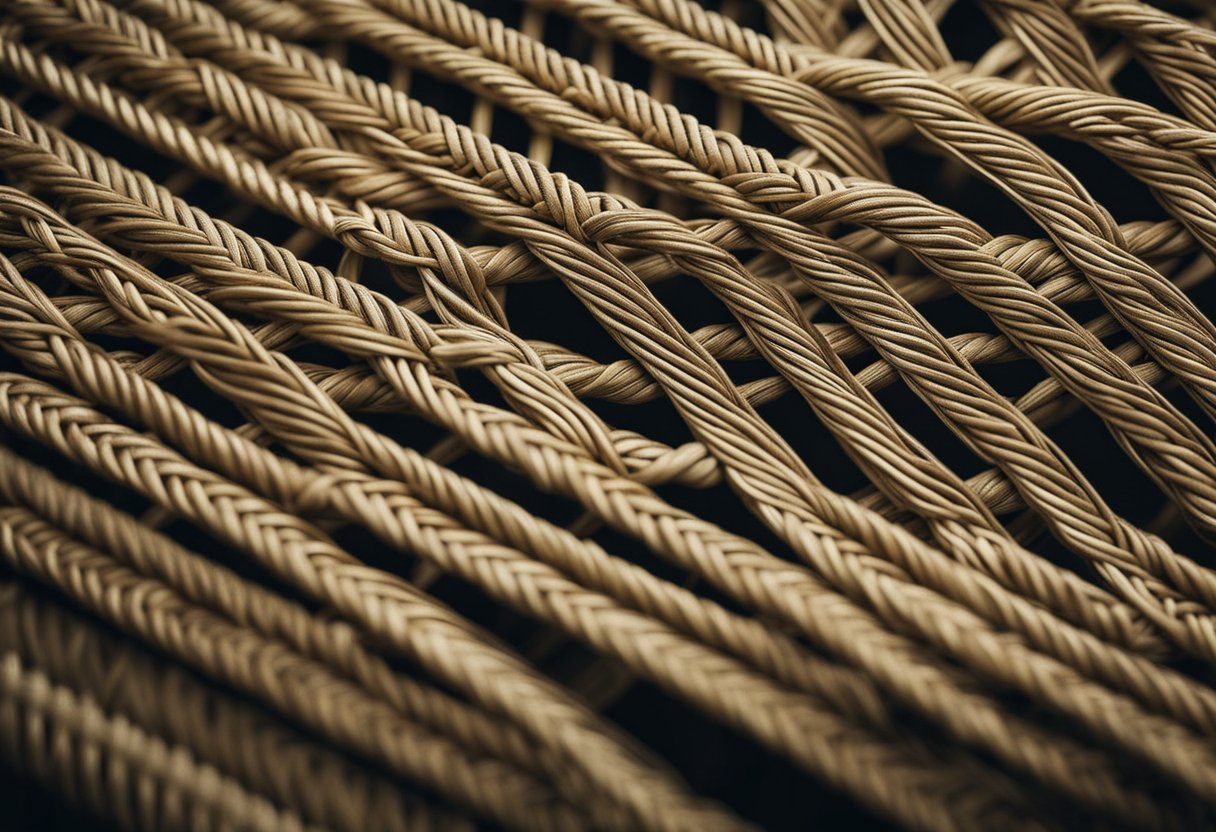
In the ever-changing world of fashion, Irish style continues to thrive, demonstrating remarkable resilience and a constant rejuvenation that pays homage to our cultural heritage. Through the years, adaptation and evolution have been key to the relevance of Irish fashion, both at home and internationally.
Contemporary Interpretations
We witness a range of fashion designers who take the rich tapestry of Irish traditions and rework them into modern attire. Emphasising clean lines and innovative materials, these creatives maintain traditional elements while ensuring each piece feels current. For instance, Magee has expertly transitioned from producing timeless wool pieces to designing contemporary collections which remain true to their roots yet appeal to younger generations. This movement showcases how tradition can meet modernity without losing the essence of our distinct identity.
Emerging Irish Designers
The Irish fashion scene is buzzing with fresh talent, keen to chart new territories while staying connected to our cultural past. Emerging designers, emboldened by our legacy, are at the forefront of this sartorial revolution. Spotlighting the likes of Dana secures a future where external influences harmoniously blend with domestic inspirations. These designers symbolise the dynamism of Irish style, confirming that while they respect tradition, they are not confined by it. Their work echoes the nation’s story of evolution and adaptation – always moving forward, yet ever mindful of where we’ve come from.
Irish Dance and Fashion
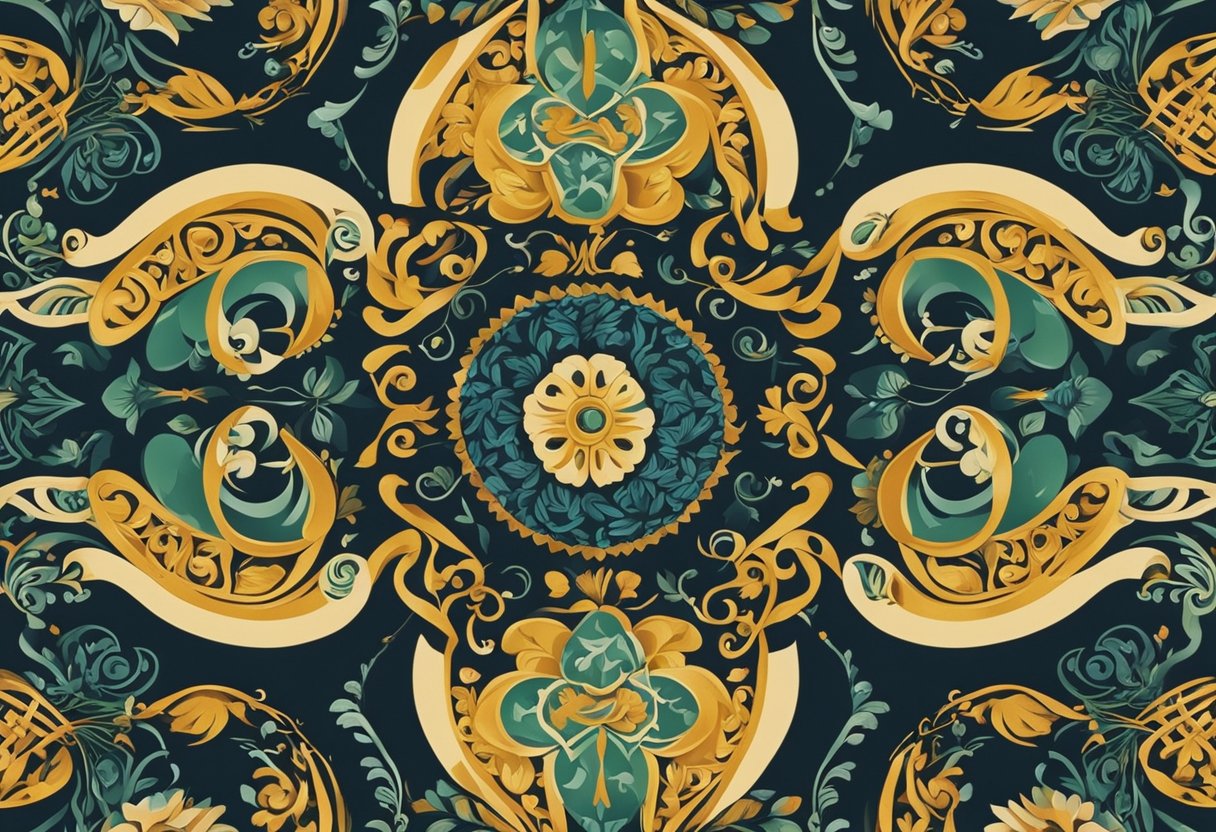
Irish dance and its distinctive fashion deeply intertwine, reflecting a nation’s identity and history through rhythm and fabric. Costume design and storytelling have been pivotal in expressing Ireland’s cultural narrative.
Costumes and Cultural Expression
Costumes in Irish dance serve not only an aesthetic function but also represent a form of cultural expression. They echo the nation’s history, from hand-woven fabrics inspired by early Irish attire to the elaborate designs seen at modern gatherings and festivals. For instance, dancers often wear outfits reminiscent of the traditional ‘leine’, a tunic that conjures images from ancient manuscripts.
The evolution of the costumes can be traced back to festivals such as the Feis na nGleann, a hallmark event that showcases Irish culture and dance. These garments are a tapestry of Irish identity, meticulously crafted to convey historical accuracy and cultural pride.
The Role of Storytelling in Dance
Storytelling is the heartbeat of Irish dance, where each step and movement weaves part of a larger narrative. Dance is a living story, a dynamic portrayal of tales passed down through generations at cultural gatherings. It’s in the intricate footwork and precise choreography where legendary characters and epic tales come to life.
This combination of narrative and movement reinforces the role of dance as more than entertainment; it’s a powerful medium for shared cultural history. As an illustration, during festivals, dance sequences often translate folklore into performance, making Irish heritage accessible to audiences worldwide.
Symbolism and Its Fashionable Expressions
Symbolism in Irish fashion serves not only as a nod to cultural identity but also as a means of embodying ideals such as power, wealth, wisdom, love, courage, and magic.
- Power & Wealth: Often, intricate Celtic knot patterns signify power and eternity. These are integrated into the design of accessories and garments to denote status and heritage.
- Wisdom: The iconic Claddagh ring, representing wisdom and fidelity, translates into clasped-hand motifs in apparel.
- Love & Courage: We see the heart symbol, typically associated with love, incorporated into jewellery and garment prints. Designs that reflect the tale of Cú Chulainn might invoke the spirit of courage.
- Magic: Motifs of mythical creatures such as fairies and leprechauns can suggest elements of the supernatural and whimsy.
We interpret these symbolic representations within modern Irish fashion in various ways:
- Embroidery
- Prints
- Weaving techniques
Embroidery often features haute couture gowns with elaborate threadwork encapsulating stories of love or bravery. Prints in ready-to-wear collections bring folklore to everyday fashion, offering a piece of legend to the masses. Weaving techniques, inherited from generations past, lend tangible texture to the symbolism laced through the fabric.
Through these methods, we fashion a visible connection with Irish folklore, allowing wearers to display their cultural affinity or personal values. This fusion of past and modern narratives within attire enriches our understanding and celebration of heritage. Irish designers excel at transposing these emblematic elements into contemporary fashion, highlighting our profound respect for tradition while embracing innovation.
Global Reach of Irish Fashion
Irish fashion has extended its influence well beyond the shores of the Emerald Isle, engaging a global audience and permeating popular culture with its unique blend of tradition and contemporary design.
Marketing to a Worldwide Audience
Our designs and styles have transcended borders, assuming a place of pride on the global stage. The iconic Irish tweed, for instance, has woven its way into international fashion, reflecting adaptation and resilience. Projects like Irish tweed weaving its way onto the global stage have showcased the versatile application of this traditional fabric in contemporary fashion, enlightening and inspiring a diverse consumer base.
Influence on Popular Culture
From high-end runways to streetwear, Irish fashion has made its mark on popular culture, often featuring as a symbol of cultural heritage in various media. Adapting to trends while preserving its distinct identity, Irish fashion is regularly spotted in films, television, and literature, thus weaving a narrative of creativity and innovation that resonates with audiences across the globe.
Preservation of Folklore in Fashion
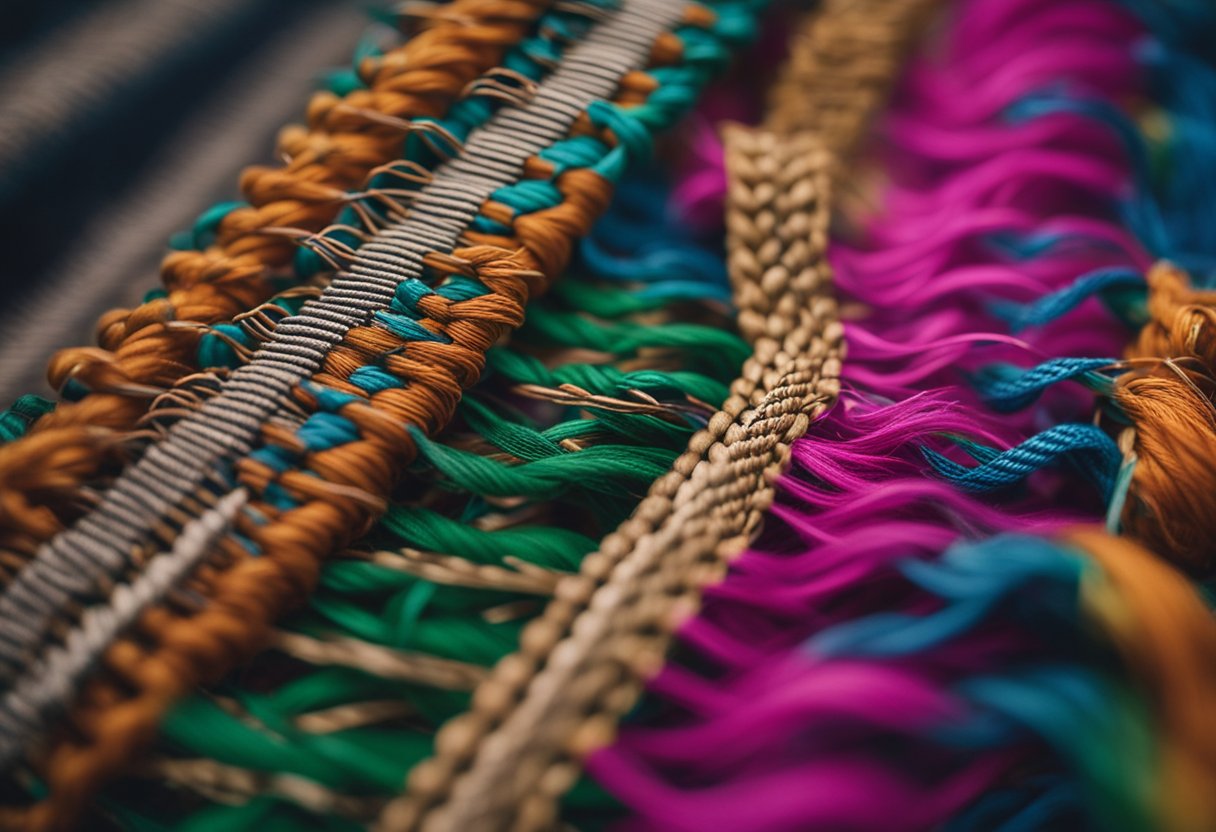
In our exploration of the fusion between tradition and modernity, we recognise the pivotal role fashion plays in the preservation of folklore. Irish fashion, in particular, has been deeply influenced by a rich tapestry of folklore that encompasses oral tradition and oral transmission, carrying forth historical narratives and cultural values.
- Oral Tradition & Fashion: Through the intertwining threads of narrative and fabric, oral traditions are captured in the motifs and designs of Irish fashion, ensuring that stories which once resonated in the spoken word now live on in the visual language of attire.
- Historical Events: Celebrated historical events often find their expression in contemporary fashion through subtle nods in patterns and the repurposing of ancestral materials, reinforcing the link between past and present.
- Cultural Values & Wisdom: The values and wisdom once conveyed around the fireside through myth are encapsulated in the modern designs that pay homage to these age-old tales, promoting moral lessons indirectly within their aesthetic.
The commitment to keeping folklore alive is evident in the attention to detail and the choice of materials reflecting the natural palette of the Irish landscape. Through these means, the essence of myth and legend is skilfully carried forward, ensuring longevity and ongoing relevance.
The act of weaving itself becomes a metaphor for the cyclic nature of life, where ancient wisdom permeates contemporary culture whilst sustaining its unique flavour. These practices not only preserve folklore but also bolster a sense of identity and continuity that is invaluable to our cultural heritage.
Frequently Asked Questions

In exploring the weaving of tales into threads, we uncover the rich tapestry of Irish folklore in fashion design. Irish fashion has a unique language, telling stories of the past through contemporary design.
How has Irish folklore influenced contemporary Irish fashion design?
Irish folklore has inspired designers who infuse their apparel with motifs from ancient myths and the enchanting landscapes of Ireland. By interpreting legendary characters and traditional themes, they create modern and steeped in heritage fashion.
What elements of traditional Irish attire are still prevalent in modern fashion?
Lattice work resembling Celtic knots and the utilisation of tweed, reminiscent of the rural Irish landscape, are key elements that continue to shape modern Irish fashion, offering a nod to an age-old legacy while meeting the needs of contemporary wear.
In what ways do Irish designers incorporate folklore into their clothing creations?
Designers often use emblematic symbols, such as the Claddagh or Celtic spirals, alongside folklore-driven colour palettes and fabric choices that echo the natural beauty and tales of the Emerald Isle in their garments.
Can you trace the historical impact of folklore on the evolution of Irish fashion?
Certainly, the evolution of Irish fashion reflects a history rich with folklore. Garments have transitioned from practical and functional design, deeply connected to everyday life and customs, to innovative pieces that echo these stories, showing a progression that’s tied to cultural identity.
What are the distinguishing features of Celtic-inspired fashion trends?
Celtic-inspired fashion trends are often distinguished by intricate patterns, such as interwoven knots and spirals, the use of rich greens and earthy tones, and materials that pay homage to natural elements central to Celtic mythology and Irish landscapes.
How does traditional Irish clothing differ between male and female styles throughout history?
Historically, men’s attire focused on the kilt and leine, garments accommodating the need for freedom of movement and ruggedness, while women’s clothing emphasised layered skirts and dresses, often with intricate embroidery inspired by Irish folklore and nature.






